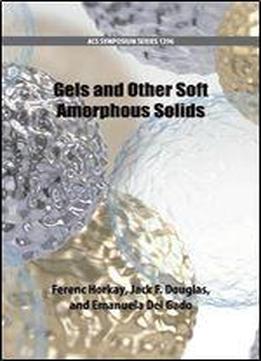
Gels And Other Soft Amorphous Solids
by Ferenc Horkay /
2019 / English / PDF
139.5 MB Download
Gels are ubiquitous both in materials science and biology. Interest in the behavior of this class of soft materials has increased significantly in the last decades as new experimental approaches have been developed to synthesize and characterize gels, and as theoretical and computational methods have advanced to model the structure and properties of these complex materials. For example, molecular simulation is now an essential tool to investigate gels and other types of soft matter where experimental measurements are not possible. The growth of this field to include applications in biology and medicine as also provided much impetus to gels research. The goal of this volume is to discuss recent progress in gel science. The chapters cover a wide variety of topics from polymer chemistry, physics, materials science and engineering, reflecting the interdisciplinary character of this field. A knowledge of the physical and chemical behavior of gels is essential for understanding, designing, and controlling material properties and performance. Gels can be synthesized with either flexible or stiff chains, linear or branched, and their length can also be tailored, etc. The network chains can be bonded to each other by chemical crosslinks or physical bonds involving van der Waals interactions, dipole-dipole interactions, hydrogen or ionic bonds, or pi-pi or pi-charge interactions. In addition to traditional polymer gels, this volume also focuses on low molecular mass organic gelators, relatively new, but rapidly growing, research direction in gel science. Special attention is devoted to the diverse applications of gels using hydrogels for cleaning the painted surface of artwork (conservation of cultural heritage such as paintings and sculptures), developing advanced drug delivery systems, investigating the mechanism of setting of cement and hardening of concrete, etc.











